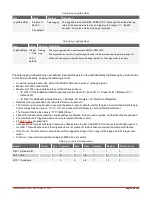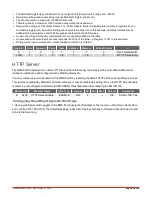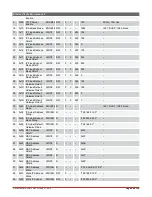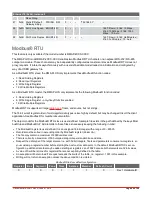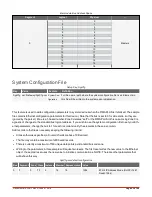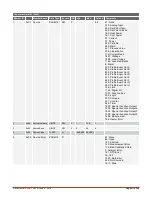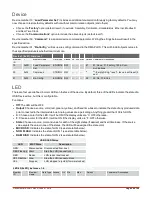
Document #10-32813 Rev A; June 07, 2019
Page
51
of 69
Figure 38: Modbus® RTU Test Results
Also see
.
Non-Volatile Memory
Software objects that contain non-volatile elements are stored in files in a protected partition of memory on the NOR
FLASH drive that cannot be accessed directly by users. Software tools such as Dashboard may be used to modify
these files indirectly.
Objects that have been changed are only saved to non-volatile memory after three seconds of inactivity. This feature pre-
vents prematurely wearing out nonvolatile memory due to constant writes. However, this also means that you must wait
at least three seconds before resetting the RMA PLUS to prevent losing recent changes.
Since the protected volume and customer volume exist on the same device, changes cannot be saved to non-volatile
memory if the NOR FLASH drive is mounted (locked).
Standard Bus and Intermodule Bus Addressing
The RMA PLUS uses a proprietary RS-485 token-passing network of both masters and slaves. The RMA PLUS is a
master on both channels. Standard Bus Instance 1 is low-speed standard bus and Standard Bus Instance 2 is inter-
module bus. The logical address is independently software selectable for each bus.
Address Segmentation
The standard bus is segmented and thus requires an additional configuration parameter to address data points. There-
fore, when you purchase an EZ-ZONE RUI and EZ-ZONE PM, and configure it with a PC, they are all at address 1 yet
there is no address conflict.
Value
Segment
0
No segmentation of the physical address (i.e. intermodule bus)
1
Masters: PCs
2
Masters: EZ-ZONE RUI, RMZ, RMA PLUS
3
Masters: Legacy field communication cards
Standard Bus Address Segmentation


